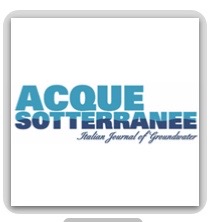Original Papers
30 December 2015
Vol. 4 No. 4 (2015)
Meteo-climatic analysis during the period 1984 - 2014 in Rome area (Central Italy)
Publisher's note
All claims expressed in this article are solely those of the authors and do not necessarily represent those of their affiliated organizations, or those of the publisher, the editors and the reviewers. Any product that may be evaluated in this article or claim that may be made by its manufacturer is not guaranteed or endorsed by the publisher.
All claims expressed in this article are solely those of the authors and do not necessarily represent those of their affiliated organizations, or those of the publisher, the editors and the reviewers. Any product that may be evaluated in this article or claim that may be made by its manufacturer is not guaranteed or endorsed by the publisher.
1098
Views
981
Downloads
Authors
ISPRA - Istituto Superiore per la Protezione e la Ricerca Ambientale Dipartimento per la Difesa del Suolo - Servizio Geologico d'Italia Servizio Geologia Applicata e Idrogeologia, Roma, Italy.
Università degli Studi di Roma La Sapienza
Dipartimento di Scienze della Terra - Laboratorio di Idrogeologia Quantitativa, Roma, Italy.
ISPRA - Istituto Superiore per la Protezione e la Ricerca Ambientale Dipartimento per la Difesa del Suolo - Servizio Geologico d'Italia Servizio Geologia Applicata e Idrogeologia, Roma, Italy.
ISPRA - Istituto Superiore per la Protezione e la Ricerca Ambientale Dipartimento per la Difesa del Suolo - Servizio Geologico d'Italia Servizio Geologia Applicata e Idrogeologia, Roma, Italy.
ISPRA - Istituto Superiore per la Protezione e la Ricerca Ambientale Dipartimento per la Difesa del Suolo - Servizio Geologico d'Italia Servizio Geologia Applicata e Idrogeologia, Roma, Italy.
How to Cite
Meteo-climatic analysis during the period 1984 - 2014 in Rome area (Central Italy). (2015). Acque Sotterranee - Italian Journal of Groundwater, 4(4). https://doi.org/10.7343/as-130-15-0157
PAGEPress has chosen to apply the Creative Commons Attribution NonCommercial 4.0 International License (CC BY-NC 4.0) to all manuscripts to be published.












